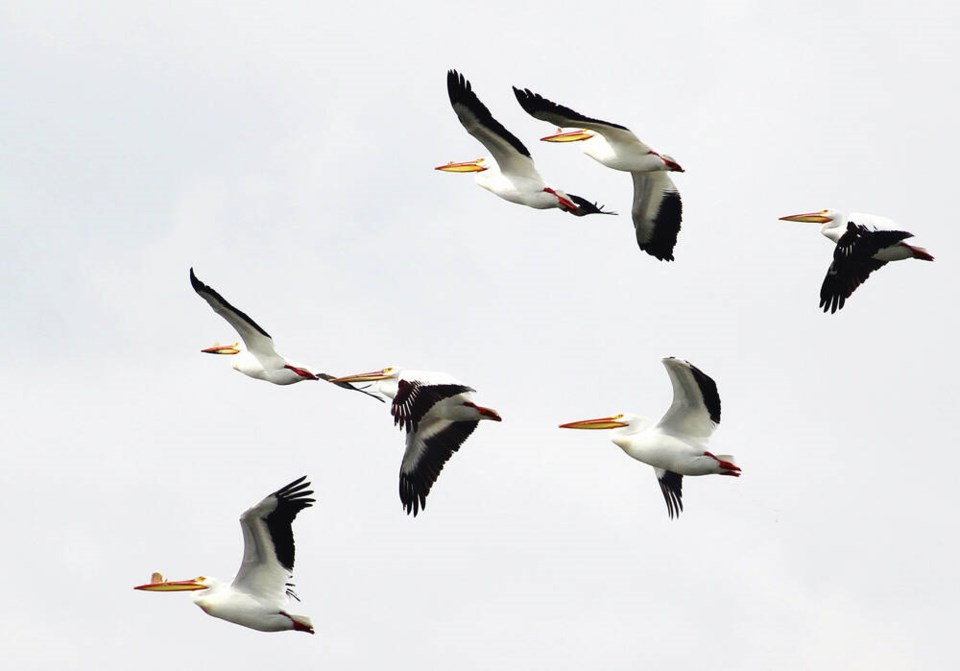Birders are aflutter after several sightings of squadrons of endangered American white pelicans over parts of Vancouver Island.
The large fish-eating birds with elongated bills and deep pouches have been spotted at Cattle Point in Oak Bay, Panama Flats and Swan Lake in Saanich and in North Saanich near Victoria International Airport. There are also reports from Cowichan Bay and Lantzville about flocks of 30 or more in flight and touching down on water.
“They’re touring and they are hard to miss,” says bird expert Ann Nightingale of the Rocky Point Bird Observatory.
And they’ve been becoming a more common sight in these parts in late May and June since 2014, she said.
American White Pelicans are normally found in the Chilcotin region with their only breeding and nesting sites on small islands at Stum Lake, 70 kilometres west of Williams Lake. There are also squadrons that nest in the Columbia Valley in Washington state.
Pelicans are known to fly long distances from nesting sites to forage for food. They usually arrive at Stum Lake in late April and lay eggs in early May. They winter in southwest California and the Pacific coast of Mexico.
In British Columbia, the birds are red-listed and designated as endangered because of their single breeding and nesting site.
Nightingale said sightings of American pelicans are on the increase as the birds switch up their migratory paths to nesting sites for various reasons, including climate change and smoke from forest fires.
“We’re seeing several species of birds expanding their range northward because of climate change,” she said. “Before 2014, they were a very rare sight here and I would have to go back to paper records to find the sightings before 2014. There weren’t many.”
Fires in the B.C. Interior this year may be delaying their return to traditional nesting areas, said Nightingale, or it’s quite possible they could be looking for new areas if their traditional nesting sites are compromised by fire or smoke.
“Birds navigate by landmarks using sights and smells,” she said.
She said it’s also possible that some species of birds might forgo nesting. Depending on the circumstances of the health of their traditional nesting areas, it may be a year they don’t reproduce, she said.
“Birds tend to be territorial,” said Nightingale. “A robin, for example, if their nesting site is destroyed by a house being built, they can’t go next door because the spot might already be taken.
“Pelicans don’t have that problem because there aren’t a lot of pelicans around,” she said. “We are seeing range expansion. It is possible they could expand [nesting sites] if it’s a suitable place.”
Nightingale said sandhill cranes, which have traditionally built nests in the B.C. Interior, have recently been found nesting on the North Island.
>>> To comment on this article, write a letter to the editor: [email protected]



